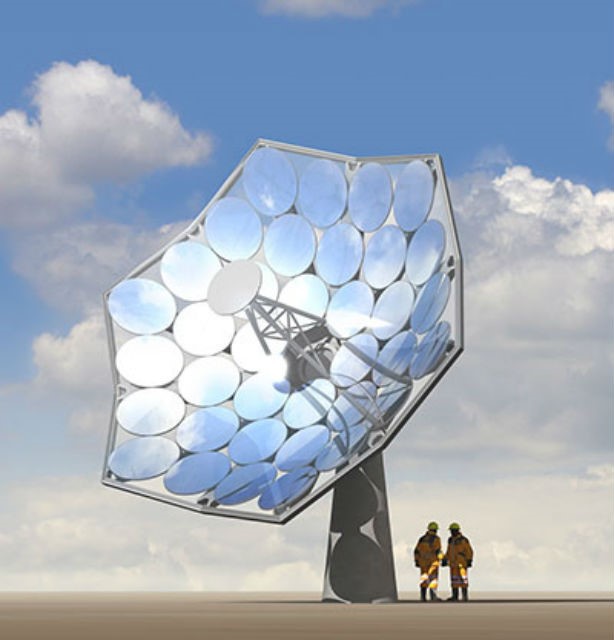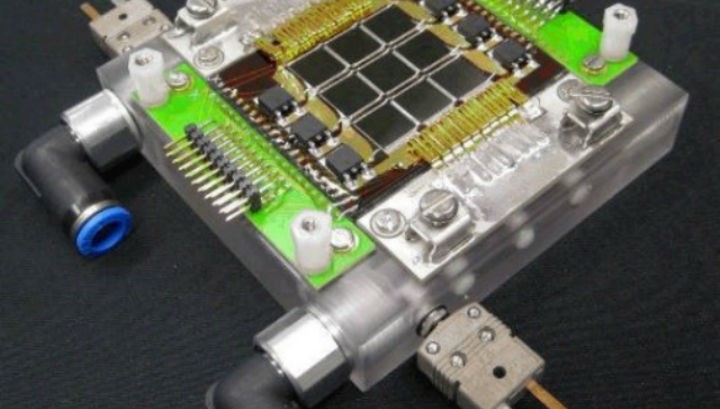IBM and AairLight Energy are working to create an integrated technology HCPVT, which is a desalination plant, solar battery and cooler

IBM and AairLight Energy are working to create a new technology HCPVT , which is based on solar energy. This system uses IBM's developments in the field of water cooling and purification and AairLight Energy technology in the field of solar energy.
The result of the overall development is a parabolic antenna with an area of approximately 40 square meters, covered with 36 elliptical mirrors. Mirrors are made of plastic film, the thickness of which is only 0.2 millimeters. The sun's rays are concentrated by the system on liquid-cooled tanks, with each receiving tank containing chips of approximately one square centimeter.
')
The performance of each such chip is 57 watts of energy per sunny day. The overall performance of the system, one antenna - 2 kW of electrical energy + about 20 kW of thermal energy.
The cooling system is quite complex, and the principle of its work, according to the developers, resembles the principle of the human circulatory system. Miniature tubes conduct purified water around receivers, removing excess heat energy. In this case, the heating goes to a temperature of 85-90 degrees Celsius, which is quite enough for the normal operation of the chip. Without such a cooling system, the heating would go up to 1500 degrees, which would lead to the destruction of the system.

According to the lead author of the study, Bruno Michel, such a system can be configured not only for energy production, but also for desalination, as well as for cooling the air. The water contaminated with mineral salts passes through the heating tubes, after which it is purified in a distillation system with a permeable membrane.
As for cooling, this option is possible under the condition of passing the exhaust heat through a heat exchanger with an evaporator and a condenser, where water is used as a refrigerant.
The desalination plant capacity is quite high: about 40 liters of purified drinking water per square meter of receiver per day. If you create a “farm” from such receivers, you can supply a small town with drinking water. At the same time, the average service life of such a system is approximately 60 years, with the condition that preventive maintenance is done on time (cleaning and replacing the film, mirrors, checking and repairing the whole structure).

The first systems of this type will appear in a few years (206-2017 year), since the desalination system needs final adjustment.
Source: https://habr.com/ru/post/241441/
All Articles